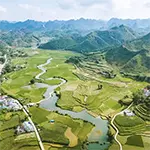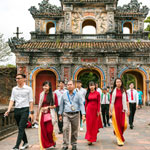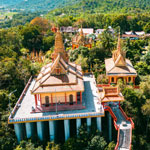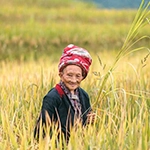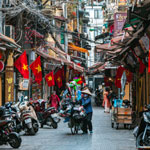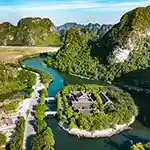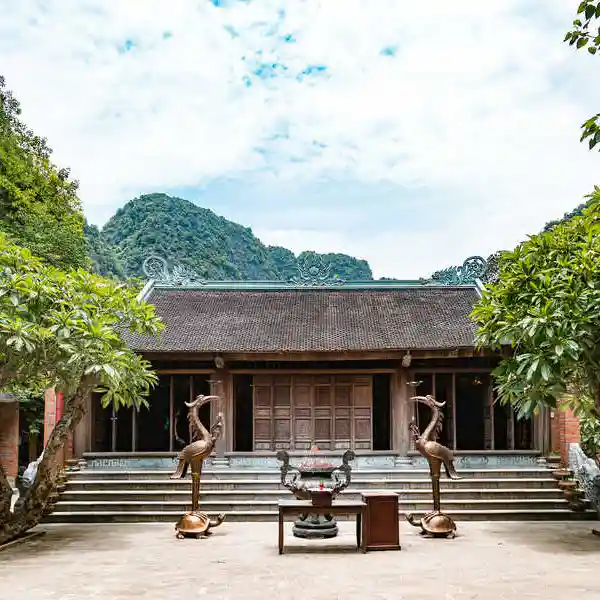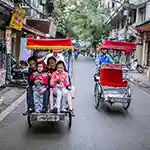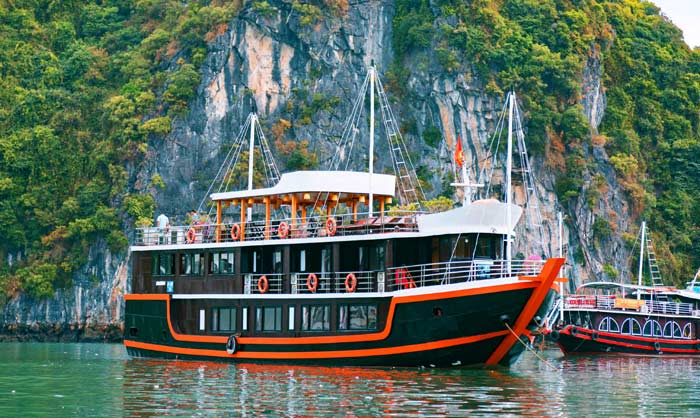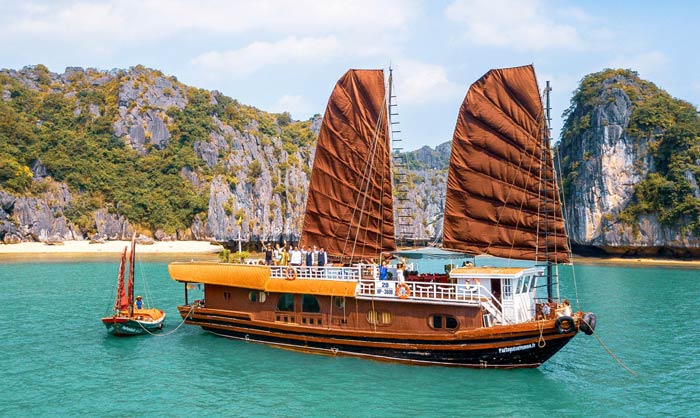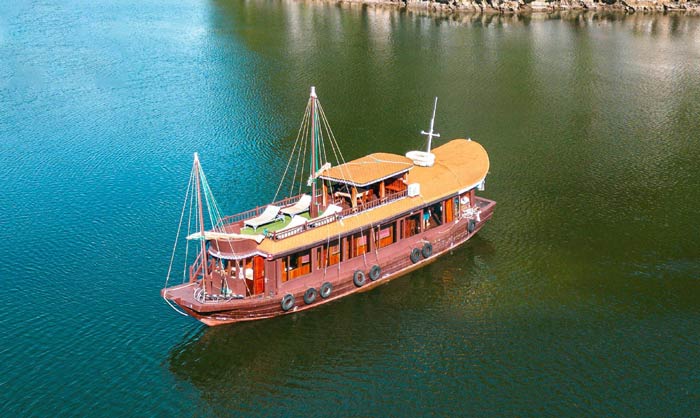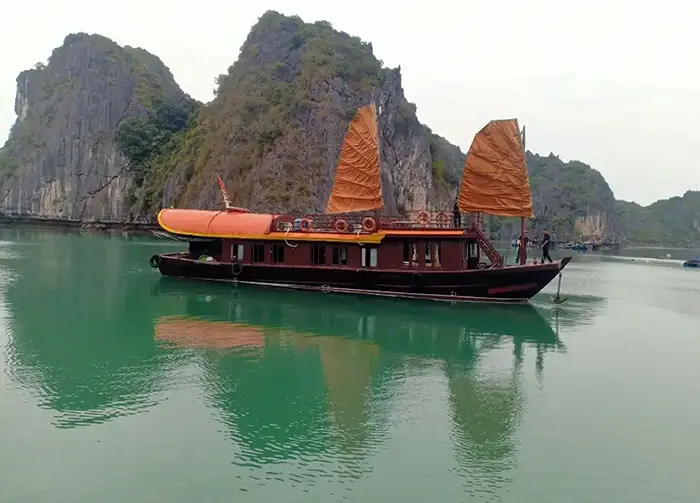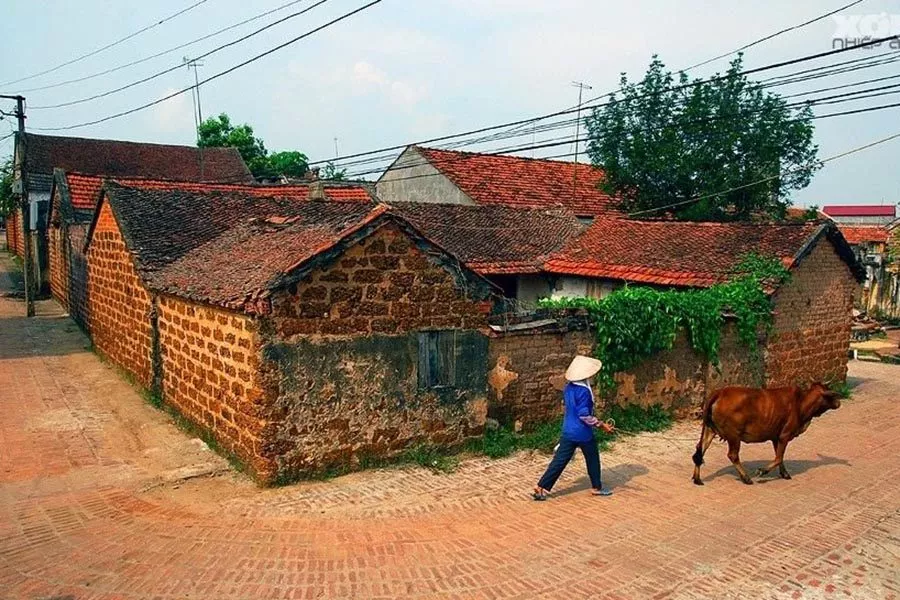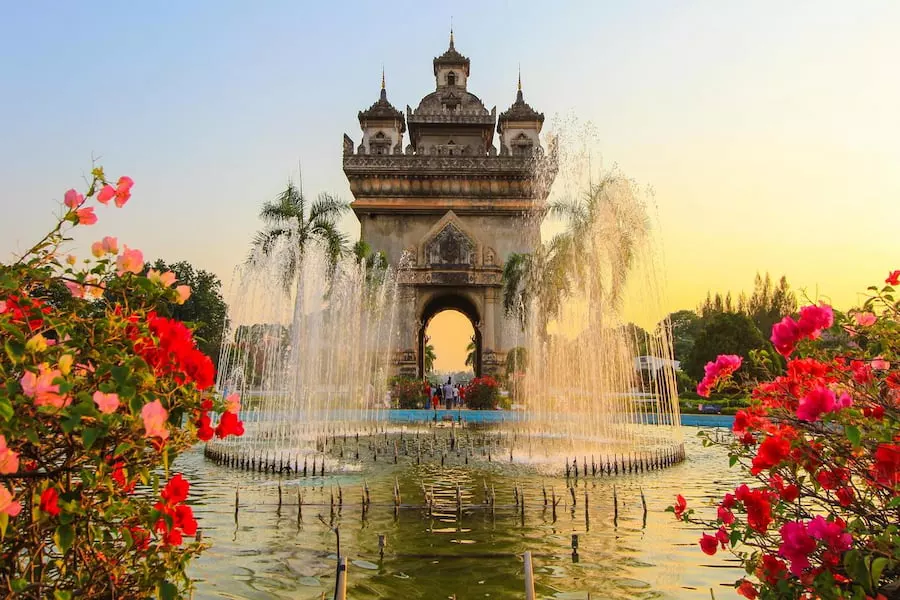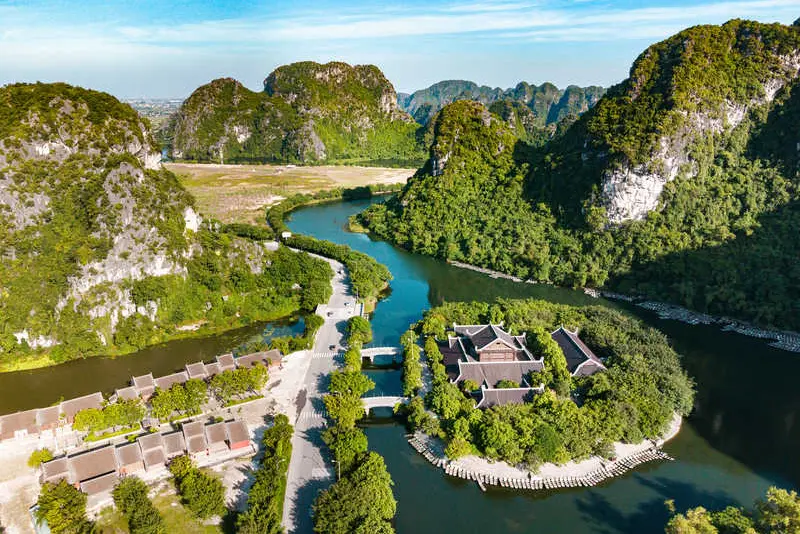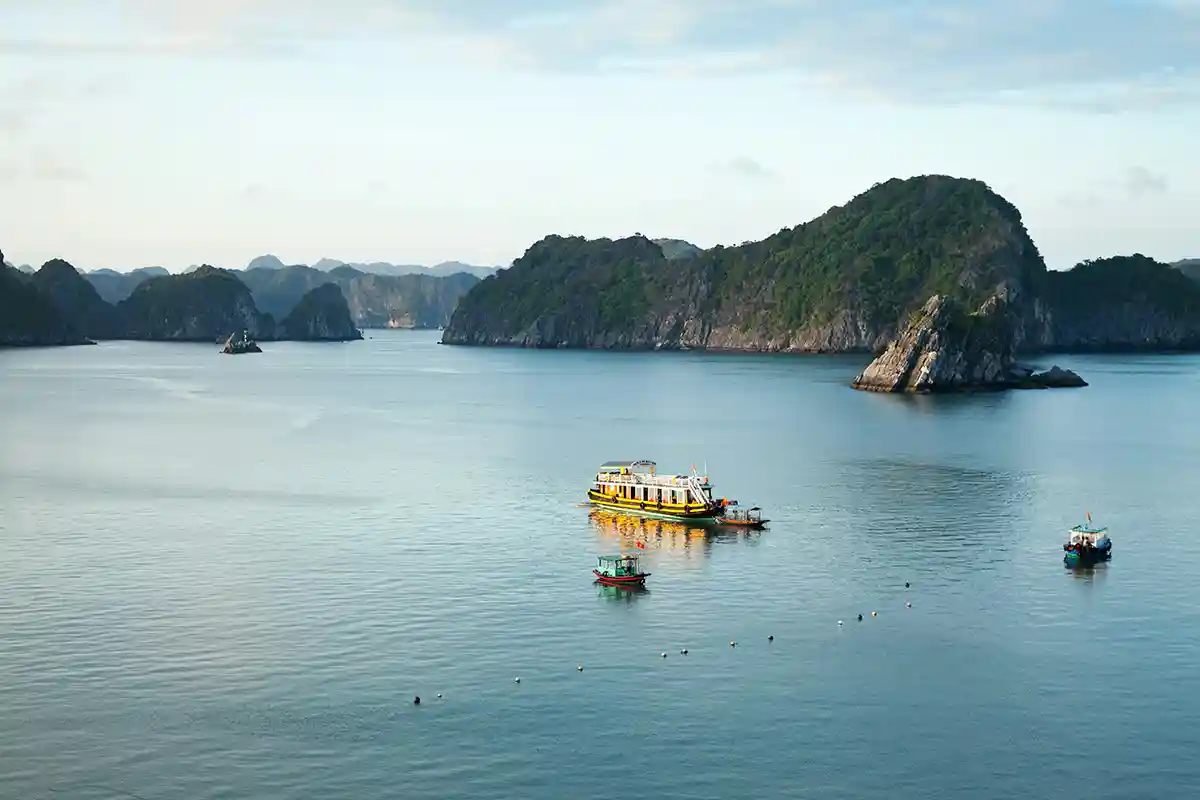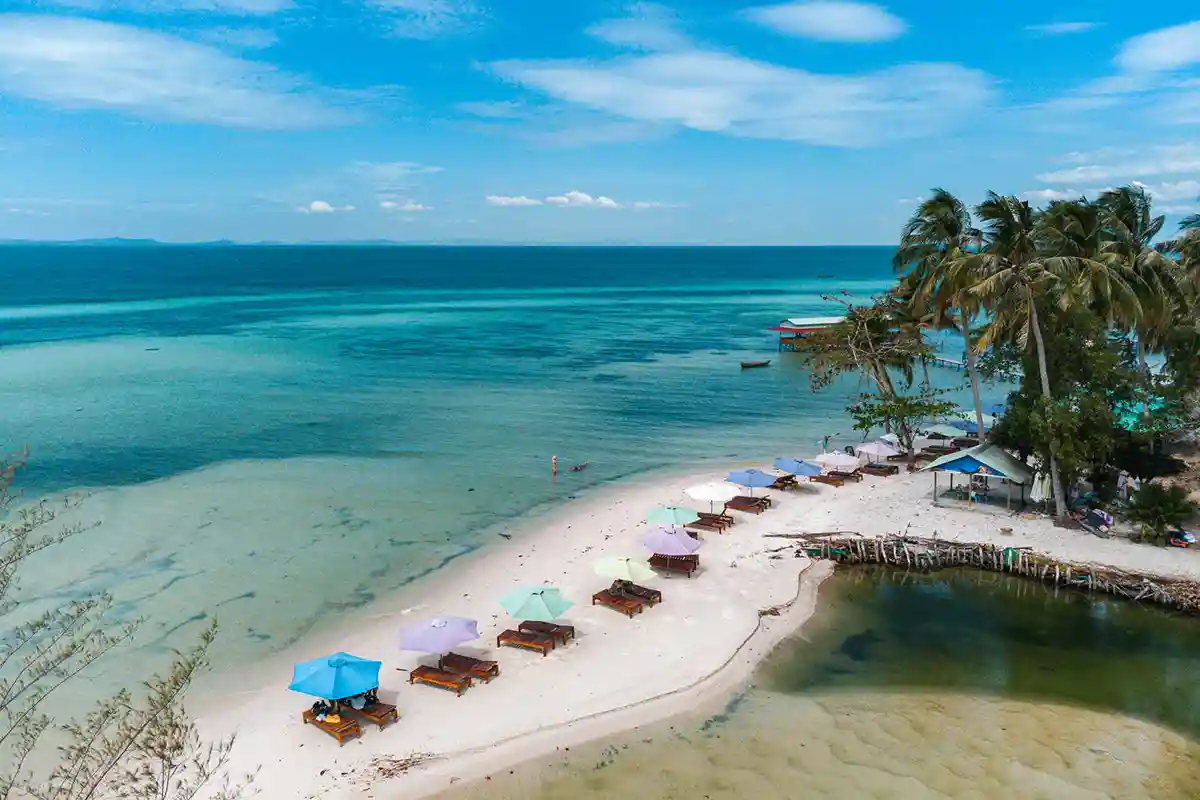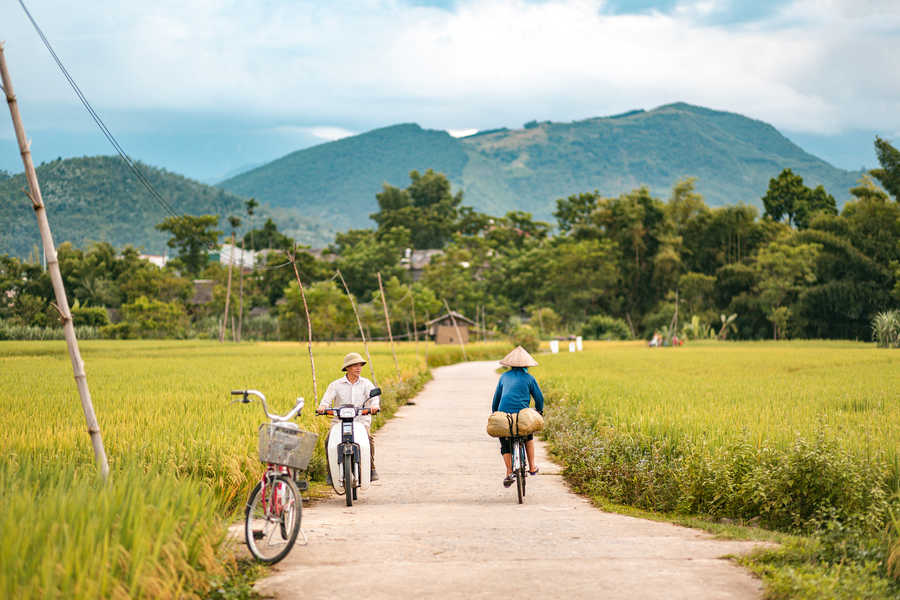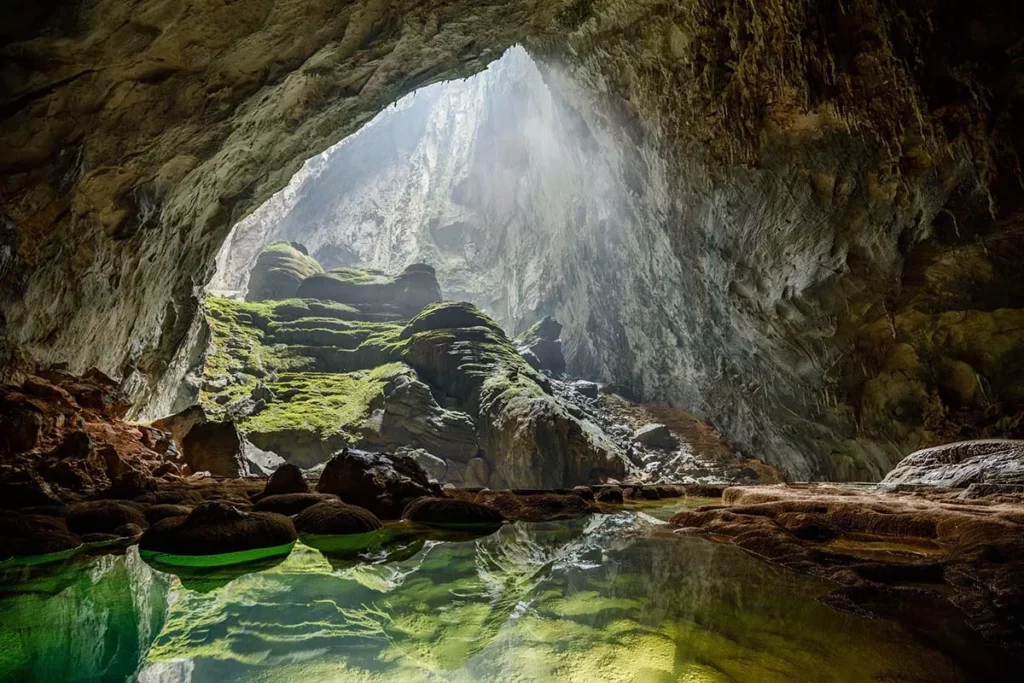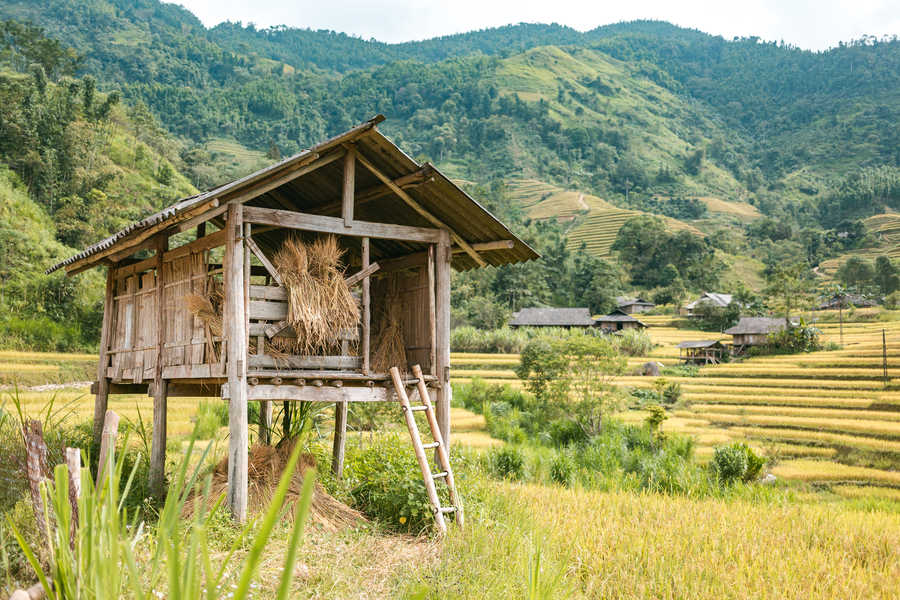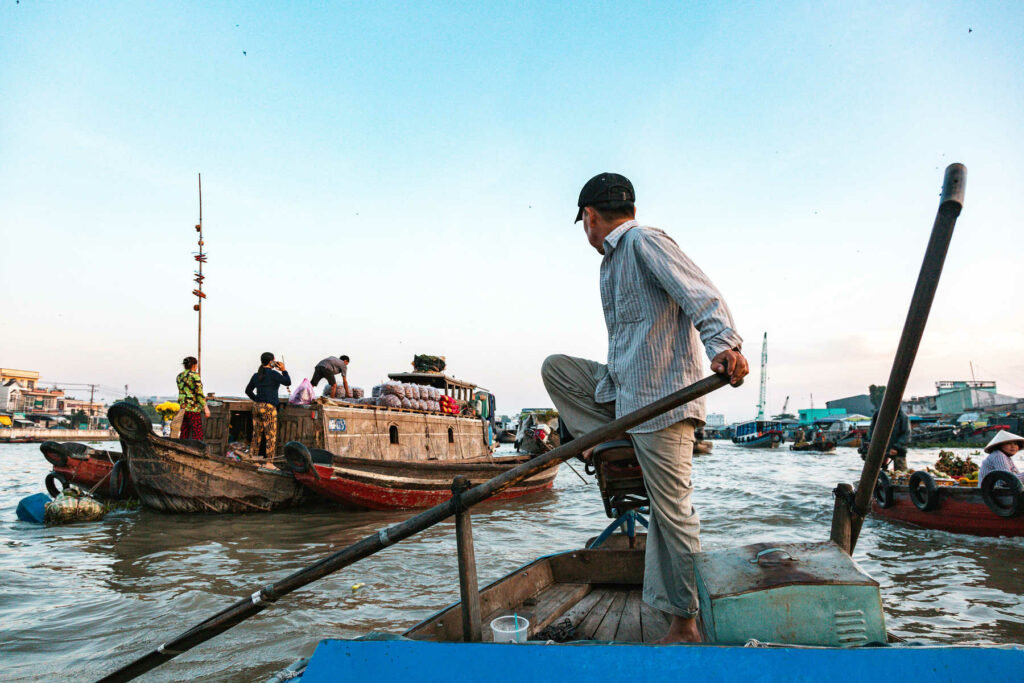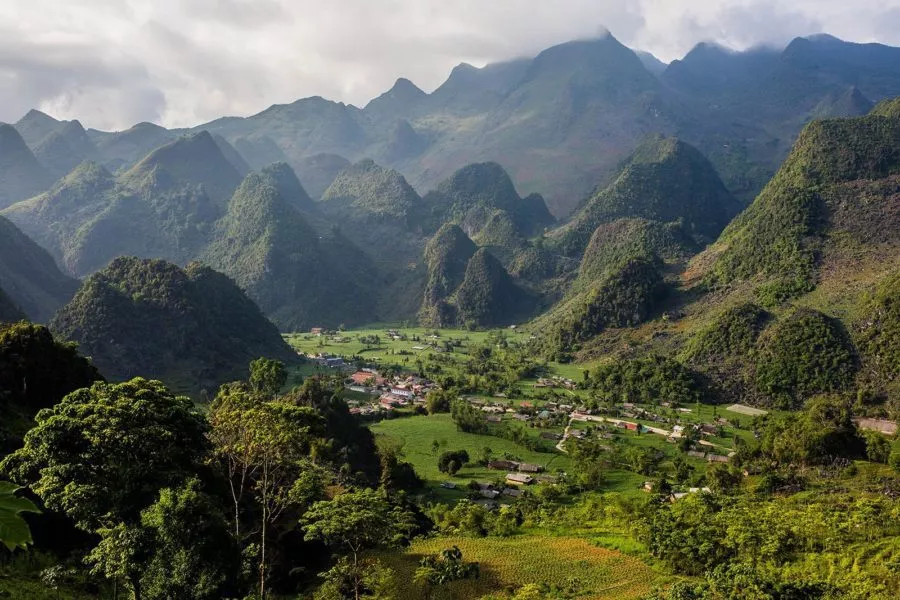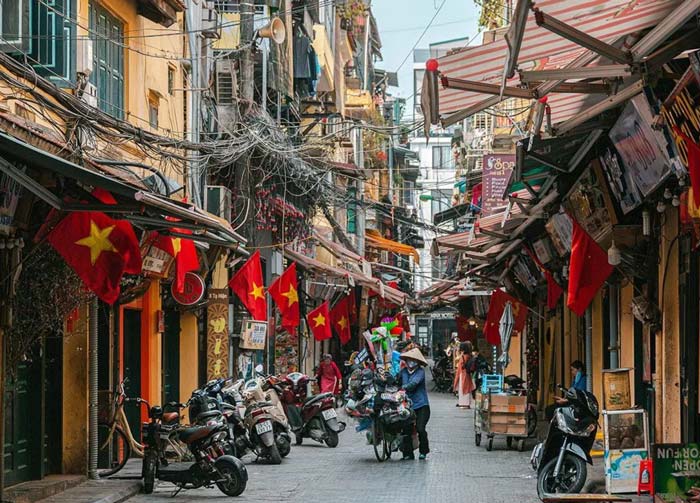Hanoi is the capital of Vietnam, but it is also a province that offers many beautiful cultural and natural sites just outside the city.
After exploring the main monuments in central Hanoi, you may want to discover the surrounding areas.
Below, we offer a selection of stunning villages and pagodas to explore around Hanoi.
If you wish to personalize your visit to Hanoi and its surrounding region, contact us to create a tailor-made itinerary suited to your interests.
The most beautiful and interesting villages around Hanoi
The ancient village of Duong Lam
Located 50 km from the center of Hanoi, Duong Lam is a typical village of northern Vietnam’s countryside. The village gate, banyan trees, temples and pagodas, the market, the communal well, and the surrounding fields are all distinctive features of the historical heritage of the Red River Delta region.
Duong Lam has many houses built over three centuries ago using traditional materials such as brick, laterite, terracotta tiles, and bamboo.
After passing through the village gate, you can stroll along the brick pathways, visit a typical village market, and experience local life. We recommend renting a bicycle on-site to explore the streets and alleys of the village. Don’t forget a traditional conical hat (nón lá) or a cap if you’re traveling in the summer (May–September)!
This charming village is a must-see destination after your visit to Hanoi.
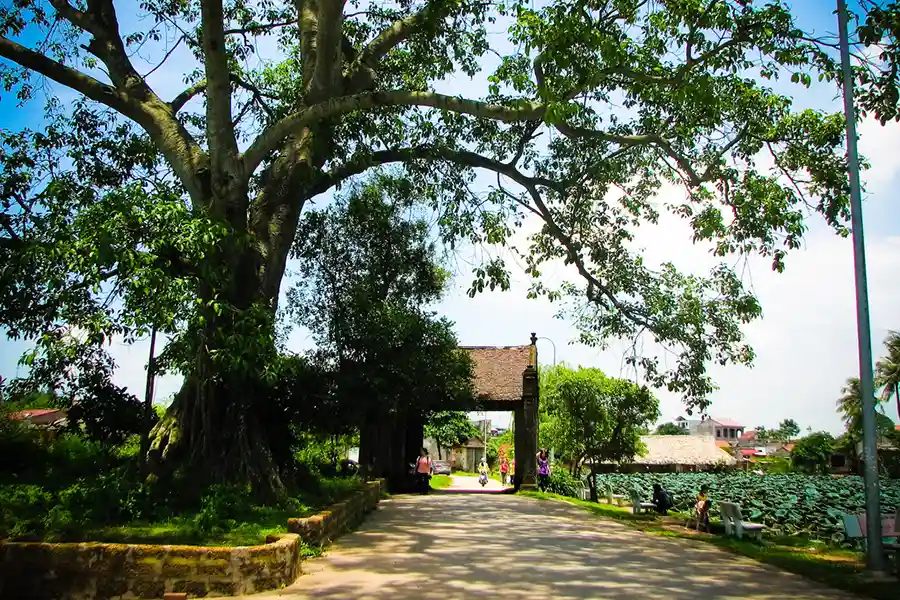
Bat Trang Pottery Village
Ceramics are at the heart of the Red River Delta’s traditional crafts. In fact, in 2010, to celebrate the millennium of Hanoi, the government, with support from international partners, created the world’s longest mosaic, stretching over four kilometers. All the ceramics used for this mosaic were produced in Bat Trang.
Bat Trang is thus the most famous pottery village in Vietnam. It is located on the left bank of the Red River, about 15 kilometers from central Hanoi.
We recommend visiting this village first to understand the intricate processes of pottery making and to do some shopping. The village has a large market that is always open. You can also explore local stores. Here are some we recommend:
Pi Gom: 253 Giang Cao – a small shop specializing in kitchenware, with modern and beautiful designs.
Gom Su Tuan Lam: Thon 4, Bat Trang, Hanoi
Gom Su Minh Quang: 300 Giang Cao, Bat Trang
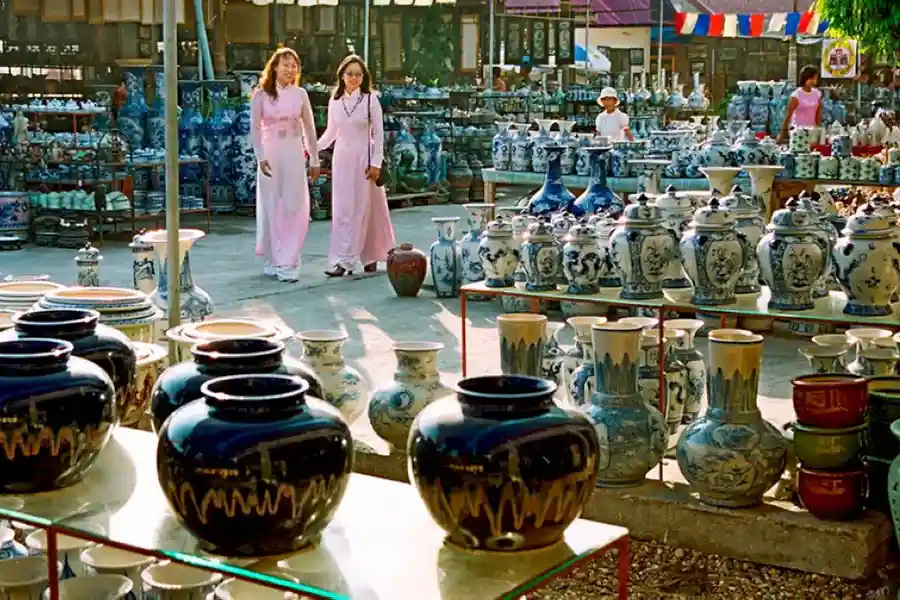
Van Phuc silk village
The art of silk weaving is believed to have originated around 3,000 BCE in China.
This technique gradually spread throughout Asia. In Vietnam, it is said to have been introduced in the 9th century AD, during the period of Chinese domination. Madame Lã Thị Nga, the wife of the mandarin Cao Biền, decided to settle in the village of Van Phuc, located about 10 km southwest of Hanoi. Following her example, the villagers developed silk weaving, which remains their specialty to this day.
Silk from this village was historically reserved for the upper echelons of society, including kings, mandarins, and wealthy individuals. During the French colonial period, it also enjoyed great popularity.
If you wish to purchase silk clothing, we highly recommend visiting Van Phuc, where more than 1,000 looms are still in operation.
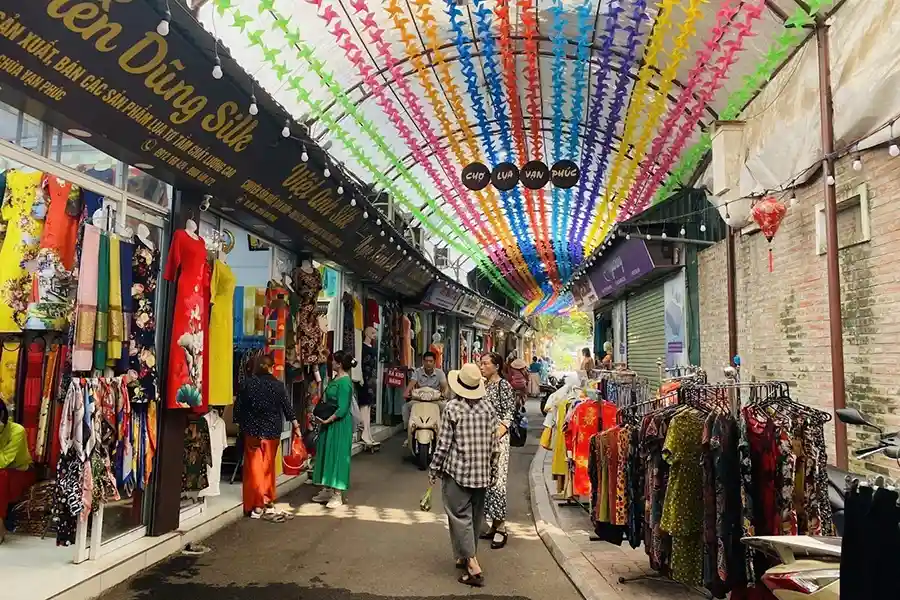
Chuong conical hat village
If you want to visit a traditional craft village away from the mass tourism crowds, the Chuong conical hat village comes highly recommended.
During your visit, you can interact with the local people and, of course, observe the entire process of making the iconic conical hats. The local market, where all the hat makers gather, takes place for about two hours on the 4th, 10th, 14th, 20th, and 24th of each lunar month.
Artisans arrive early to purchase bamboo hoops, palm leaves, and all the materials needed for hat production. Of course, you will also find vendors selling finished hats.
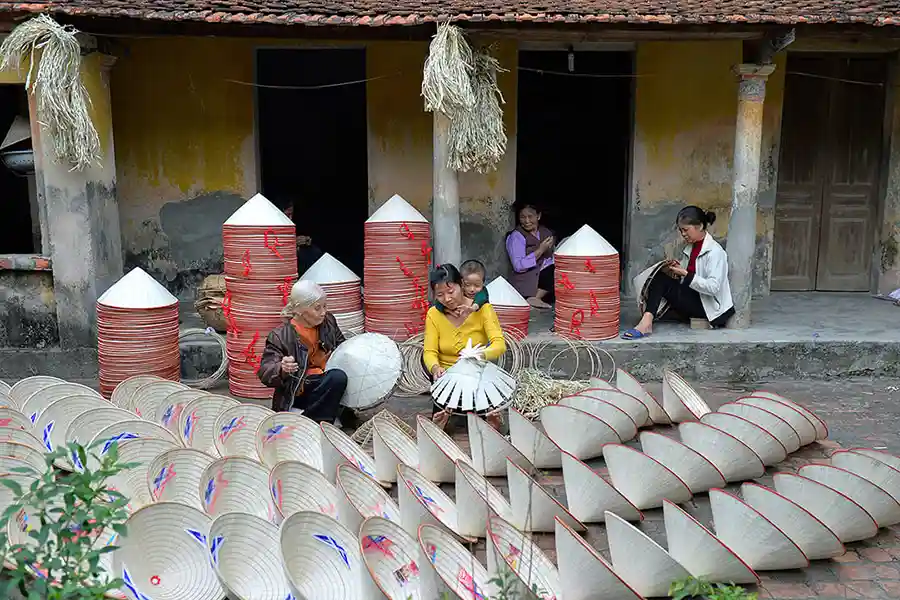
Dong Ho Village
Paper and woodblock prints hold significant value in Vietnam as they are part of the country’s collective memory and, therefore, of the Vietnamese national identity. They most often depict rural life, such as working in rice fields or traditional festivals.
The prints are made from traditional “do” paper, produced from the bark of the rhamnoneuron plant. The paper is then coated with white seashell powder, giving it a shiny surface, and finally dyed with natural colors.
The most famous prints come from Dong Ho Village in Bac Ninh Province. Located about 40 km from Hanoi, this craft has been passed down through generations for more than five centuries.
In the past, Dong Ho prints were used to decorate ancestral altars, pagodas, temples, and communal houses during traditional celebrations, such as Tet.
The printmaking art of Dong Ho Village is still considered a symbol of traditional Vietnamese culture and retains great aesthetic value
Alongside the craft villages around Hanoi, the region’s spiritual heritage—including ancient pagodas—is also not to be missed.

The most beautiful pagodas around Hanoi
Perfume pagoda (Chùa Hương)
Located 70 km from central Hanoi, the Perfume Pagoda is one of the most famous religious sites in Vietnam. It is a complex of Buddhist temples and pagodas situated atop Huong Son Mountain (“Perfume Mountain”).
The main pagoda is located in the Huong Tich Cave, considered a sacred site because legend says that the Bodhisattva Quan Am appeared there to save human souls. For centuries, the pagoda has been a major pilgrimage destination for Vietnamese people, especially during the first three months of the lunar new year.
The Perfume Pagoda holds great spiritual significance, but it is also a natural site of rare beauty. We recommend visiting outside festival periods to fully appreciate the harmony and serenity of the area.

Thay pagoda (chùa Thầy)
Located 30 km from Hanoi, Thay Pagoda is renowned not only for its traditional architecture but also for the stunning surrounding landscapes.
The complex consists of three magnificent structures: Ha Pagoda, Trung Pagoda, and Thuong Pagoda. This area is also famous as the birthplace of water puppetry, an art form invented by the monk Tu Dao Hanh, whose statue still stands in Thuong Pagoda.
To fully appreciate the rich history and cultural significance of the site, it is recommended to hire a English-speaking guide.
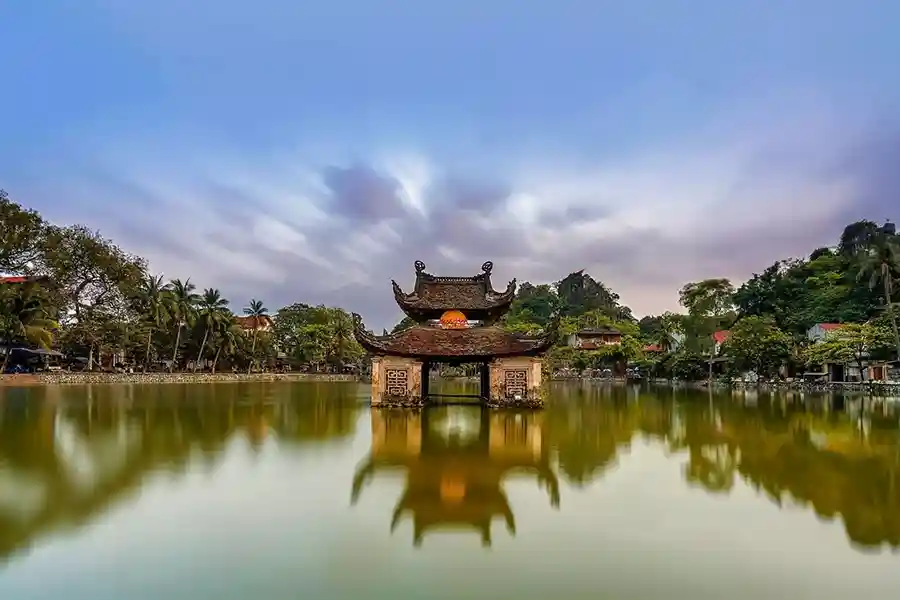
Tay Phuong pagoda (chùa Tây Phương)
Located in Thach Xa commune, 45 km from the center of Hanoi, Tay Phuong Pagoda is one of the oldest pagodas in Vietnam.
The entrance is reached after climbing 239 steps to the top of a hill. The pagoda is especially famous for its collection of 62 exquisitely carved jackfruit wood statues.
Each statue vividly depicts real human life, reflecting joys, sorrows, and hardships. They are a testament to the creativity and craftsmanship of the Vietnamese people, with every statue unique in its expression and detail.
Tay Phuong Pagoda is considered one of the crowning achievements of Vietnamese Buddhist art.
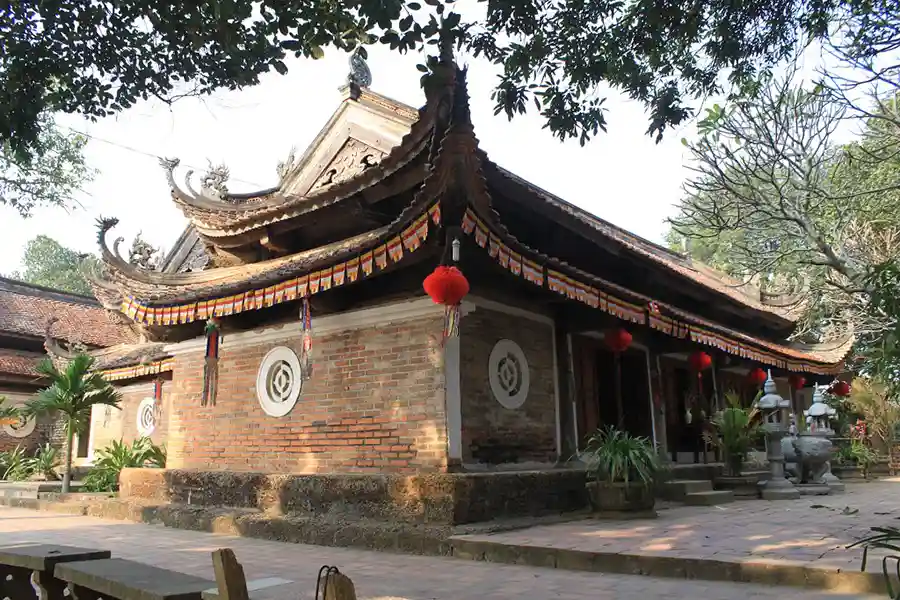
You now know all the beautiful destinations around Hanoi! All that remains is for us to wish you wonderful visits and unforgettable experiences!

